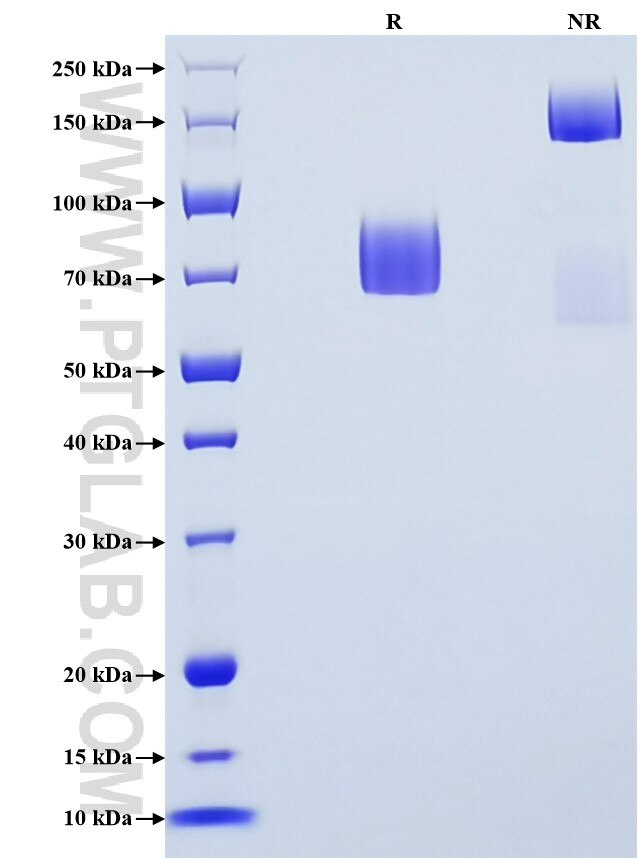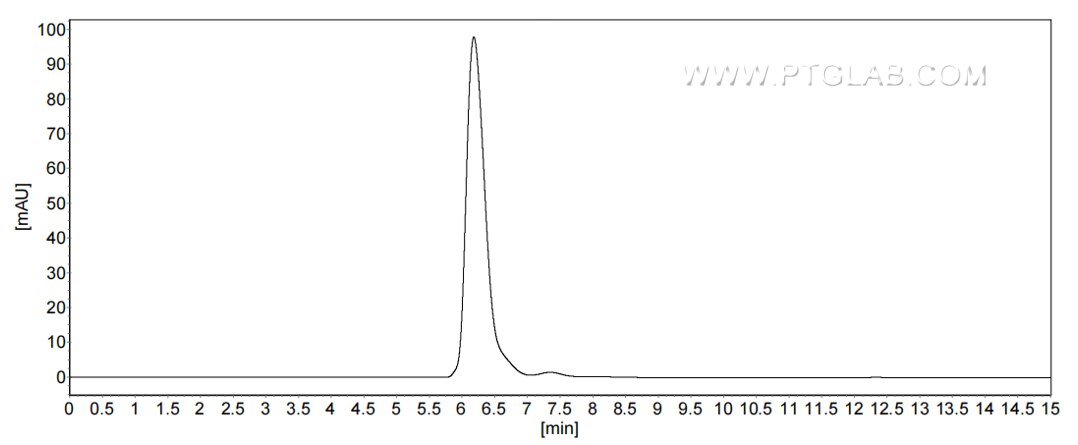Recombinant Mouse CD55 protein (rFc Tag)
Species
Mouse
Purity
>90 %, SDS-PAGE
>90 %, SEC-HPLC
Tag
rFc Tag
Activity
not tested
Cat no : Eg2124
Validation Data Gallery
Product Information
| Purity | >90 %, SDS-PAGE >90 %, SEC-HPLC |
| Endotoxin | <0.1 EU/μg protein, LAL method |
| Activity |
Not tested |
| Expression | HEK293-derived Mouse CD55 protein Asp35-Thr361 (Accession# Q61475) with a rabbit IgG Fc tag at the C-terminus. |
| GeneID | 13136 |
| Accession | Q61475 |
| PredictedSize | 62.0 kDa |
| SDS-PAGE | 68-90 kDa, reducing (R) conditions |
| Formulation | Lyophilized from 0.22 μm filtered solution in PBS, pH 7.4. Normally 5% trehalose and 5% mannitol are added as protectants before lyophilization. |
| Reconstitution | Briefly centrifuge the tube before opening. Reconstitute at 0.1-0.5 mg/mL in sterile water. |
| Storage Conditions |
It is recommended that the protein be aliquoted for optimal storage. Avoid repeated freeze-thaw cycles.
|
| Shipping | The product is shipped at ambient temperature. Upon receipt, store it immediately at the recommended temperature. |
Background
CD55, also known as DAF, is a glycosylphosphatidylinositol (GPI)-anchored surface glycoprotein that is widely distributed on blood, stroma, epithelial, and endothelial cells. It can also exist as a soluble form in plasma, urine, saliva, tears, and synovial fluids. CD55 is a complement regulatory protein. It inhibits formation of the C3 convertases through binding to C3b and C4b. It also binds the alternate pathway convertase C3bBb, the classical pathway convertase, and C4b2a to accelerate their decay. CD55 also serves as a receptor for coxsackieviruses B1, B3, and B5 and several enteroviruses. The observed molecular weight of mature CD55 varies between 50 to 100 kDa depending on the cell type. Different sizes of CD55 might be caused by alternative splicing or different glycosylation patterns.
References:
1. J M Bergelson, et al. (1994) Proc Natl Acad Sci U S A. Jun 21;91(13):6245-8. 2. So Hee Dho, et al. (2018) Immune Netw. Feb 20;18(1):e11. 3. D M Lublin 1, J P Atkinson. (1989) Annu Rev Immunol. 7:35-58. 4. Alejandro Ruiz-Argüelles 1, Luis Llorente. (2007) Autoimmun Rev. Jan;6(3):155-61. 5. D R Shafren, et al. (1995) J Virol. Jun;69(6):3873-7.

